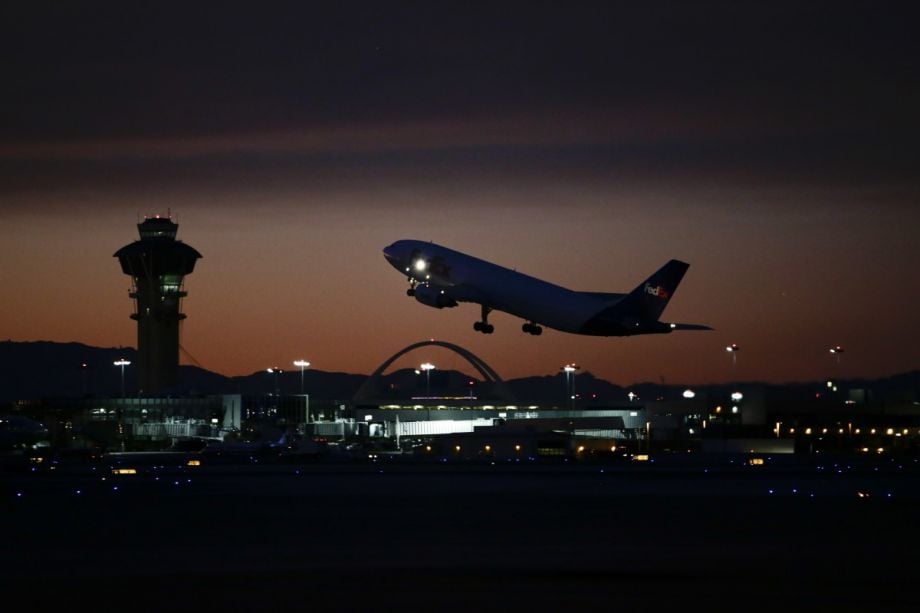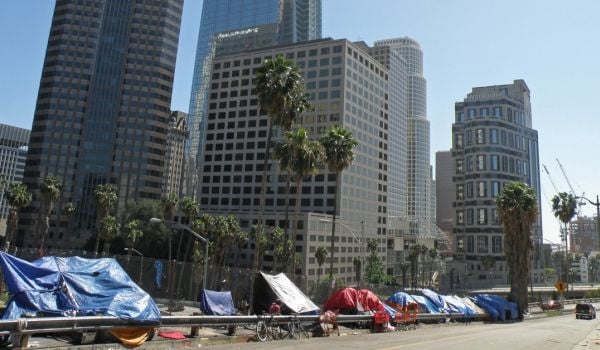In the catalog of things near which people do not like to live, airports seem to rank just below smelting plants and abattoirs and, ever so slightly, above nuclear waste dumps and mine fields. While American airlines carry more than 700 million passengers annually, nobody wants to fly out of his own backyard. Nobody that is, except the citizens of Ontario, California.
Opened in the 1940s, Los Angeles/Ontario International Airport (ONT) was designed to serve eastern Greater Los Angeles, a populous region called the Inland Empire. What started as a collection of bedroom communities with a small regional airport has, decades later, grown to a metropolis of four million — with a small regional airport.
ONT was expanded in 1998, to two runways and two terminals, to accommodate up to 30 million annual passengers. At full capacity, ONT could be as busy as airports in Boston or Philadelphia. But its traffic peaked in 2007 at 7.2 million passengers. Last year, that dropped to 3.9 million passengers (most taking short Southwest Airlines flights).
While some of ONT’s decline can be attributed to the economic meltdown of the late 2000s, the City of Ontario has long accused Los Angeles World Airports — the parent public agency of both LAX and ONT, which it acquired through a joint powers agreement in 1967 — of neglecting ONT. Ontario officials claims that LAWA has failed to market the airport properly and has charged landing fees that give LAX a relative advantage.
Many communities near airports want nothing but noise abatement and less traffic. Neighboring Orange County voted against a plan to build a world-class airport on a shuttered marine air station for those very reasons. And yet, Ontario wants as many of those potential 30 million passengers as it can get. And it has been pleading, negotiating and suing for the right to do so.
“The Ontario Airport is the largest economic engine in the Inland Empire,” says Ontario City Manager Al Boling. “It generates jobs, revenue to the city and to the entire region, so it’s critical that local control be restored.” The city estimates that the decline has cost the regional economy $2.6 billion since 2010.
Citing pending litigation, LAWA officials declined to comment, saying only that LAWA looks “forward to all the facts being presented in appropriate context and as part of the current adjudication process.”
While LAWA has brushed off claims of neglect, ONT supporters point to the raw data: In the same period when ONT’s traffic dropped because of, according to LAWA, the national economy’s decline, LAX’s traffic bounced from 62 million, down to 56 million, and then, in 2013, up to 66 million. Meanwhile, Ontario’s lawsuit uncovered internal LAWA emails that, even if they don’t point to a conspiracy, suggest that ONT is something of a stepchild. An email from a LAWA executive, released as part of the lawsuit derisively refers to the “inbred Inland Empire.”
“The conjecture is that LAWA wants to continue to control so that they can limit the amount of competition that would occur for those flights that would go into Ontario, which ultimately would find their way otherwise to LAX,” says Denny Schneider, president of the Alliance for a Regional Solution to Airport Congestion. “From our perspective, LAX and LAWA are truly considering Ontario a stepchild.”
The City of Ontario, which has already set up a public authority to run and market the airport if it gets control, has offered LAWA $250 million for the airport. LAWA wants $471 million.
The outright sale of a major airport is rare, so airport valuation is an inexact science, but Ontario filed a lawsuit last year, seeking to force the sale.
When Ontario officials envision doubled or tripled traffic at ONT, they also envision development — and lots of it. The city has carved out areas adjacent to ONT for the logistics and distribution industries in the hopes of creating a so-called aerotropolis — a business district that takes advantage of the connectivity that a major airport can offer.
“They do want to become an actual economic center in their own right … versus an appendage of Greater Los Angeles,” says journalist Greg Lindsay, author of Aerotropolis: The Way We’ll Live Next (and a Next City contributor). The Inland Empire is already a major center of logistics and warehousing, partly because of its proximity to the ports of Los Angeles and Long Beach.
“As businesses succeed, our residents benefit from the business success because those additional business revenues, whether they be sales tax, jobs, property tax, etc. … pay for the municipal services that our residents expect us to provide,” says Boling.
In a perfect world, airports would be located in the center of metro regions so as to be equally accessible to everyone. LAX is located at the end of a funnel of gnarly freeways. To its immediate west: the Pacific Ocean. Schneider says that, according to the City of Ontario, air travelers from the Inland Empire account for 1.6 million car trips along the famously congested I-10 corridor.
For this reason, among others, public officials in the Los Angeles region have long called for the “regionalization” of air travel. Committees have been set up and meetings have been held about how to strategically distribute the area’s passengers. But, say ONT’s boosters, as long as LAWA has a stranglehold on the region’s major airport and its other would-be major airport, regionalization is as much a fantasy as are flying cars. LAWA Executive Director Gina Marie Lindsey called regionalization “a silly waste of time” in the cache of emails discovered during litigation.
Supporters of regionalization say that LAWA’s entrenchment is counterproductive. The agency and LAX have nothing to lose, except the liability of running a failing airport, if they give up ONT.
“This notion that somehow if you build up Ontario, traffic will naturally go away from LAX is not true,” says Lindsay. He contends that airlines will always consider LAX the major hub that it is today and will serve it accordingly.
As a result, some say that LAWA should give away ONT and let everyone get on with their lives.
“I’d like to see them give it up for a dollar and let Ontario take a crack at it,” said Lindsay.
Josh Stephens is a freelance writer based in Los Angeles. His work has appeared in the Los Angeles Times, Planning Magazine, Sierra Magazine, the Huffington Post and the Los Angeles Review of Books. He is a contributing editor to the California Planning & Development Report and Planetizen. His website is joshrstephens.net.
Follow Josh .(JavaScript must be enabled to view this email address)
















